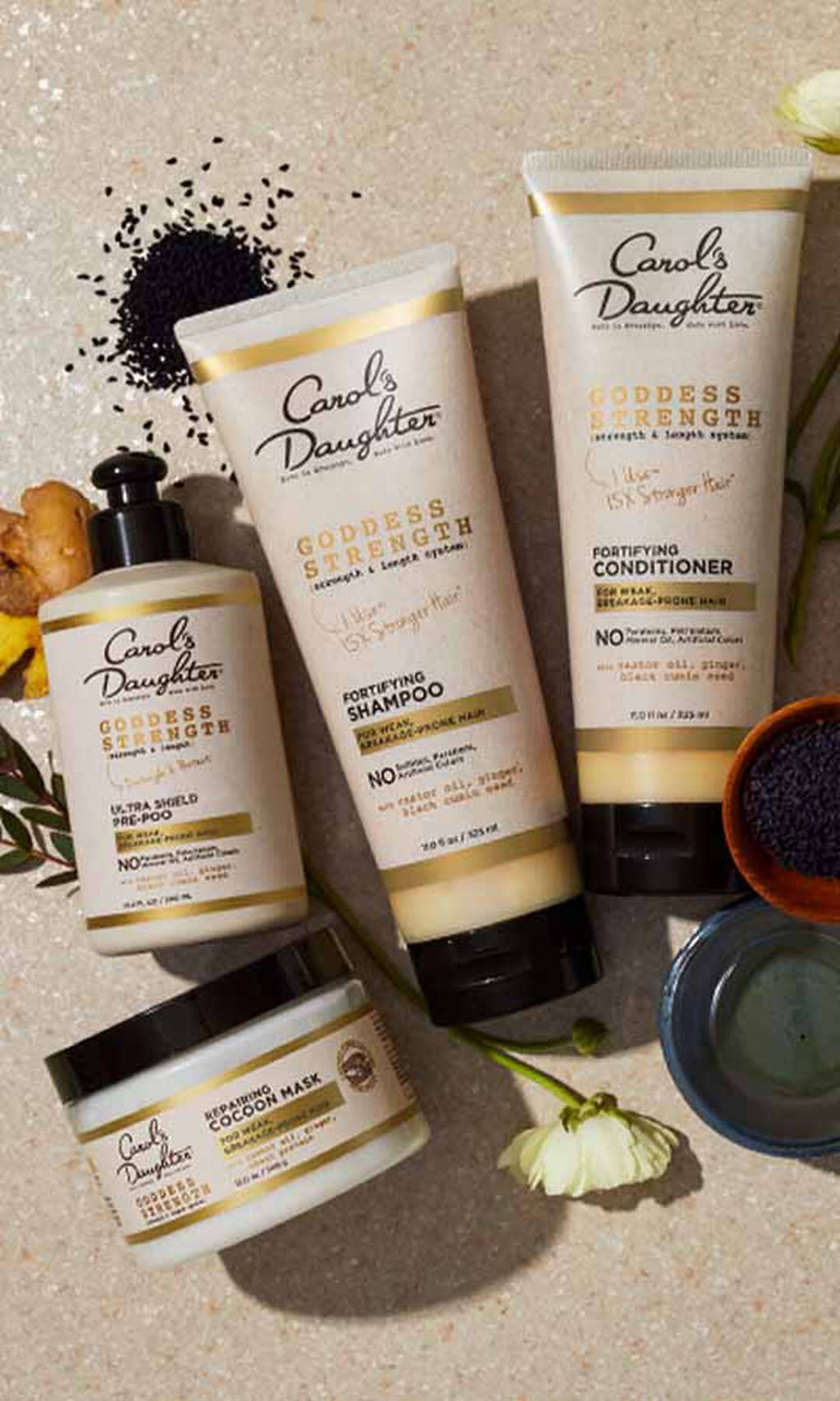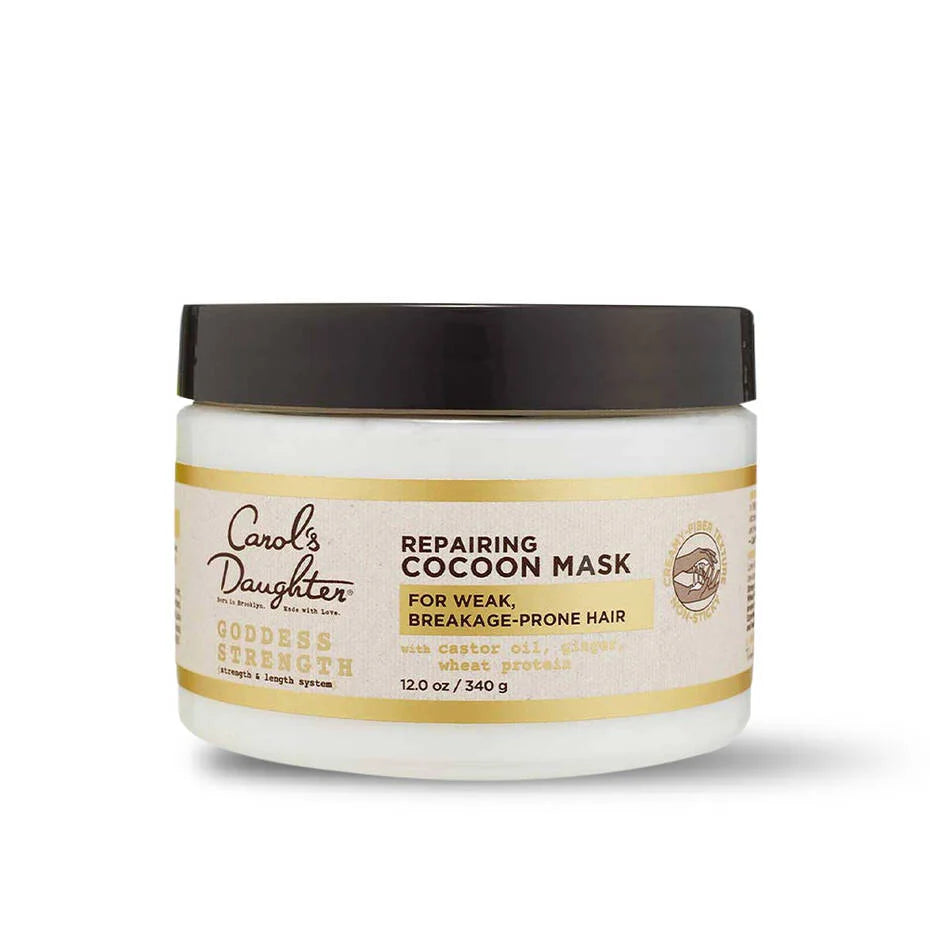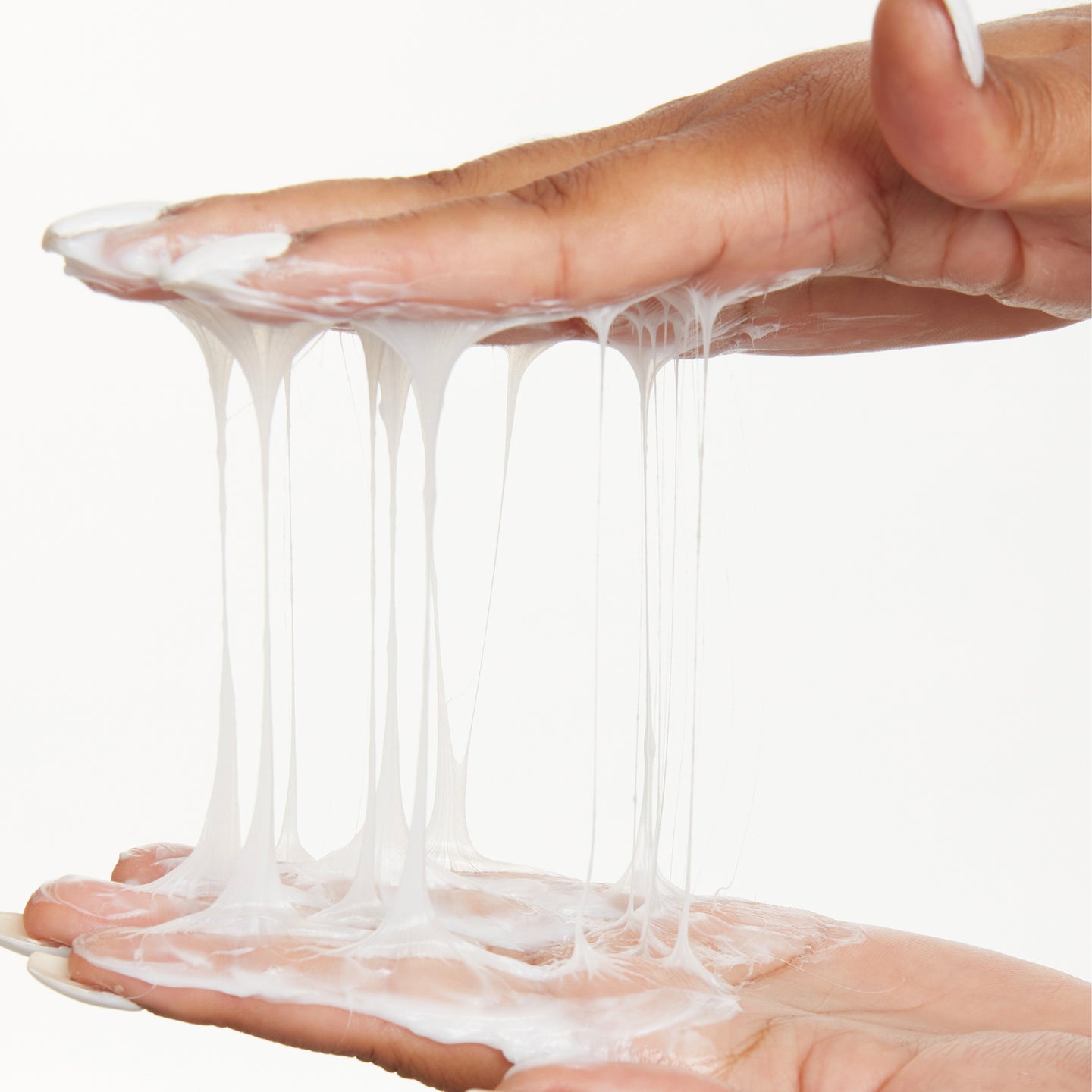TABLE OF CONTENTS
• Why is it important to know your hair type?
• What is fine, curly hair?
• What are the best products for fine curly hair?
• Best products for fine curly hair
• What is coarse curly hair?
• What are the best products for coarse curly hair?
• Best products for coarse curly hair
• Related Products
If you’ve ever asked yourself, What type of hair do I have?, you’re not alone. When it comes to defining our manes, there are so many variables involved, from curl type to hair density to hair porosity and everything in between. But one variable that can be a bit challenging to decipher is determining your hair type: We’re talking about fine vs. coarse hair.
Back in the old days, if you had straight or silky hair, it was considered fine and curly and coily types were categorized as coarse hair, but this isn’t accurate. Fine and coarse hair isn’t a matter of hair texture or curl shape, it has to do with the hair texture and the size of each hair strand (more on that below). To learn more about fine hair versus coarse hair, keep reading.
What Is Fine Hair?
The difference between fine and coarse hair is based on the diameter of each strand. Fine hair has a very small diameter, clocking in at 50 microns. Since most of us don’t know what a micron is, it’s a unit equal to one millionth of a meter. For easy reference, that’s nearly half the thickness of one sheet of printer paper.Fine hair is made up of only two layers: cortex and cuticle. The smaller diameter is due to a smaller amount of protein structure in the hair. This makes fine hair fragile and often silky and thin in texture.
What Is Coarse Hair?
Unlike fine hair, a strand of coarse hair is thicker in texture and tends to have a higher level of tolerance to manipulation like daily styling, hot tools and even some chemical hair treatments. The diameter of coarse hair is 120 microns, almost double that of fine hair.It’s also made up of three layers, giving it one extra layer than fine hair texture. Coarse hair is composed of the cortex, cuticle and medulla. The medulla layer has a higher level of protein structure and it makes the hair appear fuller, thicker and heavier.
Find Your Personalized Routine!
Know your curls better than ever before! Our quick and easy 5-step quiz, which uses powerful data to determine your hair type, will help you understand your strands. Set aside a couple of minutes to answer some simple questions, and we’ll take care of the rest. At the end, we’ll identify your curl type and main hair concerns, and provide expert tips, product recommendations, and a personalized routine. The journey to gorgeous hair starts now. Click Here to find your personalized routine.
How Do I Know If I Have Fine or Coarse hair?
Thankfully, determining if your hair is fine versus coarse is relatively simple to do. You’ll need to examine an individual strand of your hair and the entire head. Here are a few steps to determining if you have fine hair or coarse hair.The finger test
Take one strand of hair from your comb or pluck one from your head, if you’re feeling daring. Put the strand in between your fingers and rub it back and forth. If the strand feels rough, textured or even stiff, you likely have coarse hair. If you can’t feel the strand of hair at all or even very little, you have fine hair.The thread test
Again, using the one strand of hair, lay it next to a string of thread. If your hair is smaller than the thread, you’re looking at fine hair. If it’s thicker or wider than the thread, it’s coarse hair.The dryness test
Coarse hair has a tendency to be naturally drier than fine hair. If you find that your hair overall is dry and needs a lot of moisture to look and perform its best, consider it coarse hair. On the flip side, if your hair is naturally oily and or normal, chances are you have fine hair.How to Care for Fine Hair
Since fine hair is fragile and flat, here are a few tips to make it look its best without having a greasy or weighed down mane.Keep your wash routine simple
Those with fine hair tend to over wash their hair to avoid greasy roots. And while consistent shampooing and conditioning is vital, you don’t want to overdo it. Overwashing your hair can actually make moisture levels in the hair imbalance since most shampoos strip the hair of necessary oils it needs for optimal health. Opt for a gentle sulfate-free shampoo and conditioner combo that will cleanse the hair of excess oils and dirt without making it feel squeaky clean. Our go-to is the Born to Repair Sulfate-Free Nourishing Shampoo and Conditioner.Choose styling products wisely
Since fine hair can be weighed down easily, stick to lightweight products and apply them from the mid-shaft of the hair to the roots only. We recommend the Monoi Multi-Styling Milk to refresh and moisturize any style. It’s lightweight and even helps protect against hot tools.Avoid damaging tools
Fine hair is very fragile and can be damaged easily, so it’s best to skip heavy-duty brushes and fine-tooth combs to avoid breaking the hair. If you can, detangle and remove knots in your hair with your fingers and do so gently.How to Care for Coarse Hair
Coarse hair may be more durable than fine hair, but it is drier and has the tendency to produce frizz. Here are a few tips for caring for coarse hair.Don’t skip conditioning
Conditioner, oils, masks and moisturizing creams are coarse hair's best friend. For optimal hair health, adopt a masking routine once a week to restore moisture levels in the hair. The Goddess Strength Cocoon Hydrating Hair Mask helps to restore, strengthen and protect hair against future breakage and gives hair a healthy dose of extra moisture.Be protective against frizz
Coarse hair has a tendency to be frizz-prone, especially in the humid, summer months. While frizz is totally okay and beautiful, if you want to keep it to a minimum add a hold product to your hair regimen. The Wash Day Delight Gel to Foam Styler is great for keeping naturally wavy and curly hair bouncy and soft and it helps keep edges laid smooth.Opt for protective styles
Coarse hair is ideal for protective styles like box braids, soft locs and even cornrows. It gives strands a break from daily styling and manipulation and it holds styles better than fine hair.The Best Hairstyles for Fine Hair
Fine hair may need volume, but it’s killer for short dramatic cuts like a blunt bob or a pixie. Since the hair is typically smaller in volume, you won’t get the dreaded triangle effect that thicker, coarser hair may have with styles like these.Fine hair may struggle to hold updos like ponytails and topknots, due to its slippery texture, but there’s a solution for that. Use a texture spray to add volume and hold and you can rock a full, voluminous pony in no time.
The Best Hairstyles for Coarse Hair
Coarse hair has major va-va-volume, so you can rock pretty much any style. Layered cuts are your friend and give texture and fullness to your hair. Since coarse hair is fuller in volume, ponytails and buns are a go-to.Featured Image provided by @alaneisrivera
Next up: Baby Hair vs. Breakage: How to Tell the Difference
Related Products:
Born To Repair Reviving Hair Oil With Shea Butter
Born To Repair 60-Second Moisture Treatment With Shea Butter
Goddess Strength 7 Oil Blend Scalp & Hair Oil
Goddess Strength Divine Strength Leave In Milk









